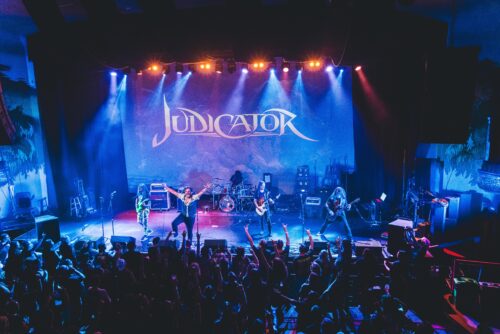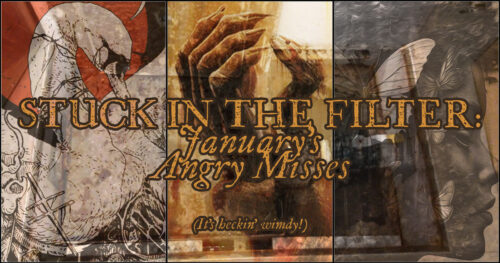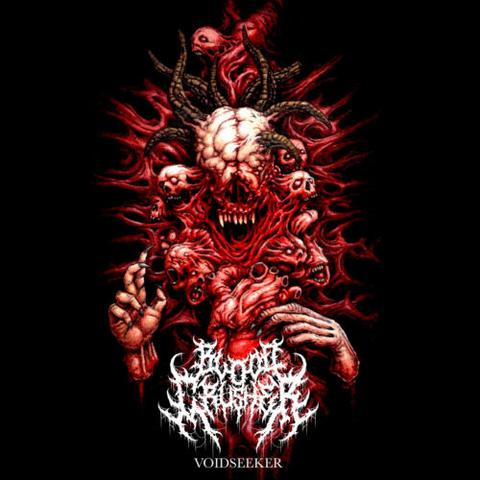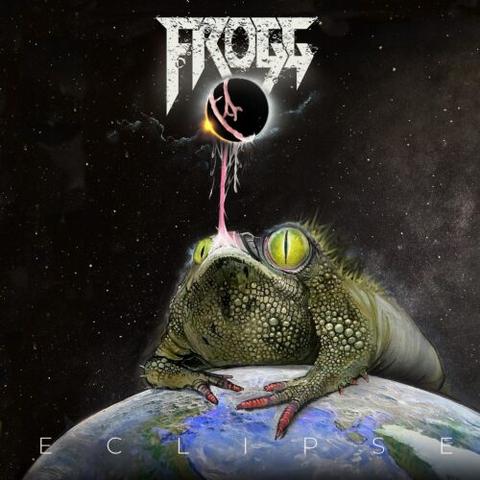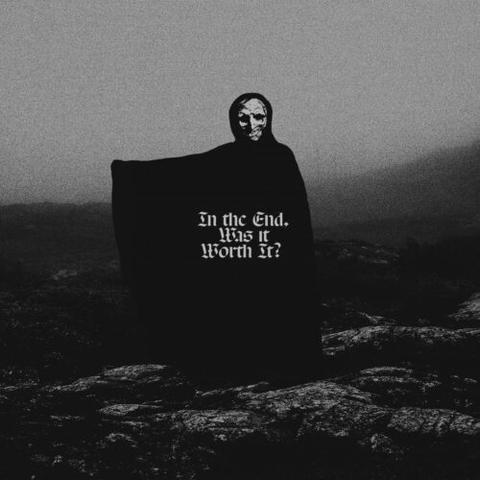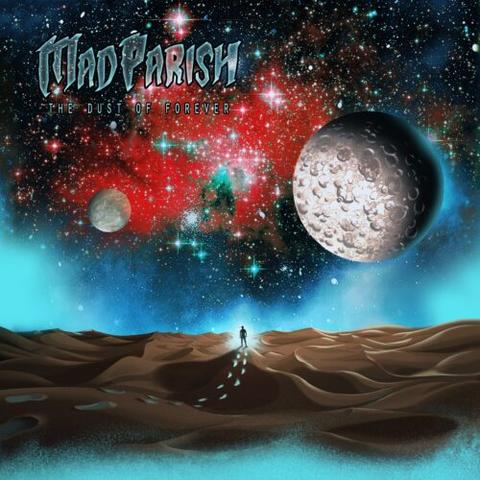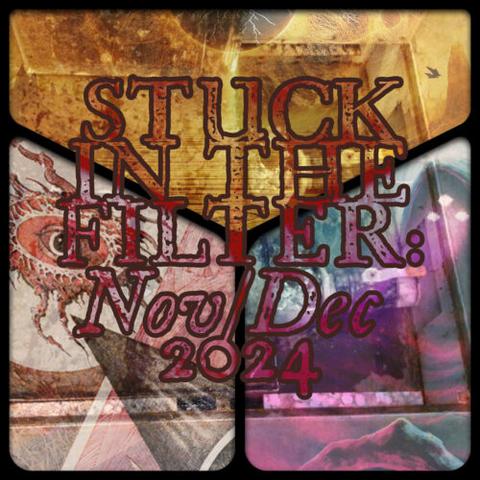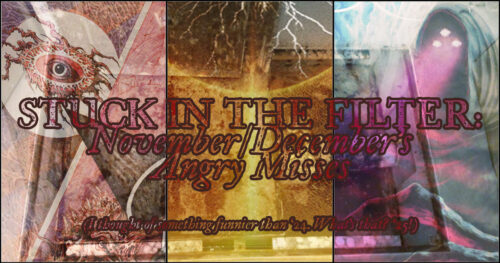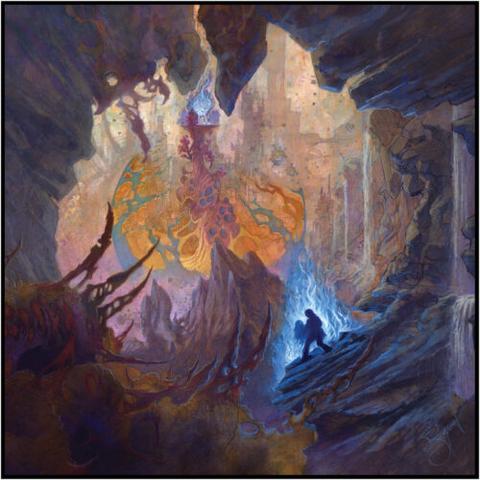Stuck in the Filter: February 2025’s Angry Misses
By Kenstrosity
February comes down the pipe about two or three months after February. A perfectly normal thing to experience here at AMG HQ, this Filter’s tardiness is brought to you in part by my body getting stuck in one of the tighter conduits that lines the concrete interior of this confounded bunker. My minions are elsewhere, trudging through similar environs, and report their findings to me via eldritch beast telepathy. Since I obviously don’t speak eldritch tongue, I have to use my Codex of Enspongification to decipher these antediluvian transmissions. I’m sure you can imagine, that takes no small measure of time, especially when you’re stuck in this galvanized prison of rusting sheetmetal.
Until my ungrateful minions can find me and rescue me—something I don’t expect to happen anytime soon considering I give them no workers benefits or pay of any kind—you’ll have to make do with the selections of rough-hewn and sharp, but valuable, ore provided below. OBSERVE AT YOUR OWN RISK!
Kenstrosity’s Crusty Grab
Metaphobic // Deranged Excruciations [February 28th, 2025 – Everlasting Spew Records]
When Atlantan death metal quintet Metaphobic caught my attention with the megalithic riffs opening their debut LP Deranged Excruciations, I thought the stank face it brought out of me might be permanent. Nothing new and nothing sophisticated awaits here. Just brutalizing riffs delivered in a relentless sequence of destruction. Lead guitars squeal and scrape against the swampy ground underfoot, leaving a noxious slime trail behind “Mental Deconstruction” and “Execration” that tastes of Tomb Mold, Incantation, and Demilich to varying degrees. Guttural utterances and cacophonic—but accessibly structured—riffs offer the same infernal ferocity of the olden ways. However, in a similar manner to Noxis, their application here feels modern and fresh-ish (“Execration,” “Veiled Horizons,” “Hypnosis Engram”). Not nearly as nuanced as that comparison might suggest, Metaphobic are more than satisfied to use their brutish death metal as a cudgel for blunt force trauma. Nods to death doom in long-form wanderings like “Disciples of Vengeance” and “Insatiable Abyss” provide an appreciable variation in pace, though it doesn’t always work in Metaphobic’s favor. While those songs tend to meander too long on ideas unfit to support such mass for so long, livid outbursts like “Veiled Horizons” and “Reconstituted Grey Matter” more than make up for it. In short Deranged Excruciations commands my attention enough to earn my recommendation here, and my attention going forward.
Tyme’s Missing Minutes
Caustic Phlegm // Purulent Apocalypse [February 28, 2025 – Hells Headbangers]
Caustic Phlegm is the filth project helmed solely by Chestcrush main man Evan Vasilakos, who joyously employed his HM-2 and RAT pedals to create the utter disgustingness that is Purulent Apocalypse. A far cry from the angsty, I’d-rather-see-humanity-dead blackened death metal of his main outfit, Caustic Phlegm is a throwback to the days when Carnage walked the streets of Sweden and Impetigo was melting faces and killing brain cells. Purulent Apocalypse is a platter of pestiferous riffs (“Fouled, Infected & Infested,” “Soft Bones,” “Blister Bliss”), so many it’s like sitting on a death metal toilet puking and shitting riffs ad nauseam. Evan’s drum work, replete with the occasional but very satisfying St. Anger snare tone, drives the mindless fun forward, and the 80’s zombie giallo synth work would have Lucio Fulci himself clawing out of his grave to eat your face. Vasilakos’ vocals are a fine litany of belches, squelches, and gurgles that sound like a colony of maggots cleaning the putrid flesh from a corpulent corpse. Caustic Phlegm is the foul stench of death and will have you reaching for the soap and steel wool as you try to rid yourself of the Purulent Apocalypse infection.
Vermilia // Karsikko [February 14, 2025 – Self Release]
Had the incomparable Darkher not released The Buried Storm in 2022, Vermilia‘s Ruska would have garnered my top spot that year, which put her on my radar for the first time. When I saw Vermilia‘s follow-up, Karsikko had dropped in February—sadly we didn’t receive a promo—I jumped at the chance to filter it. While Karsikko is a bit more straightforward than Ruska, it’s full of liltingly beautiful pianos (“Karsikko”) that give way to icy black metal riffs (“Kansojen Kaipuu”) and gorgeously rendered folk metal melodies (“Koti,” “Veresi”). Comparisons with Myrkur and Suldusk would be appropriate, but Vermilia continues to carve out her own space in the folk black metal scene, marrying beatific melody with beastly aggression. Performing all of the music on Karsikko, as is her one-woman calling card, renders her finished products even more impressive. The highlight has always been the voice, though, as Vermilia deftly transitions between angelic cleans (“Suruhymni”) and frosty rasps (“Vakat”), completing a circle that makes each of her releases a joy to listen to. It’s confounding that another of Vermilia‘s albums is an independent release, which might be artistically intentional or the result of bone-headed label execs. Either way, don’t miss out on Karsikko, as Vermilia shouldn’t stay unsigned for long.
Killjoy’s Drowsy Discovery
Noctambulist // Noctambulist II: De Droom [February 7th, 2025 – These Hands Melt]
Although I love blackgaze, I must admit that it can be challenging to find artists who stand out in the genre, whether through quality songwriting or unexpected twists. It turns out that the Dutch band Noctambulist1 offers both. Noctambulist II: De Droom is a fun and fresh blend of Deafheaven-adjacent blackgaze with a Molotov cocktail of post-punk energy. The power chord-driven guitar lines prove to be an unexpectedly compatible fuel source to propel the shimmering, gazey tremolos and blackened rasps to new heights. Many songs (particularly “Aderlater” and “Lichteter”) start with neat intro melodies that catch the listener’s attention, then build and ride that momentum throughout the remainder. A faint sense of loss—stemming from the achingly relatable theme of homeownership drifting further out of many people’s reach—pervades the record, but there is also an infectious cheerfulness. Despite their name, Noctambulist are hardly sleepwalking as they tread along a well-worn genre.
Thus Spoke’s Disregarded Diamonds
Sacred Noose // Vanishing Spires [February 2nd, 2025 – Breath Sun Bone Blood]
My experience with Irish extreme metal has been that it is all incredibly dark, twisted, and supremely, gorgeously dissonant.2 Belfast3 duo Sacred Noose make absolutely no exception to this rule. Vanishing Spires’ ruthlessly brief 31 minutes are defined by stomach-tightening twisted blackened death designed to cut to the heart of misery and fear. The lurching sensation brought about by rapid tremolo descents and sudden accelerations of ever more dissonant chords, impenetrable drums, and pitch-shifting feedback is nauseating (“Entranced by Concrete Lathe,” “True Emancipation”). The pure horror of the inhuman, high-pitched shrieks answering the already fearsome bellows is anxiety-inducing (“”Black Tempests of Promise,” “Moribund”). The near-constant buzzing of noise is oppressive (“Terminal Prologue,” “True Emancipation”); the creeping, malevolent scales unnerving. And Sacred Noose play with their victim, luring them into a trap of deceptively familiar cavern-core (“Sacred Noose”) before throwing a hood over their head and yanking them backwards into more horrifying mania; or perhaps they’ll start with the assault (“True Emancipation”). This more ‘straightforward’ edge to Sacred Noose is most akin to a faster Sparagmos, while their dominant, demonic personality I can compare most faithfully to Thantifaxath, if Thantifaxath were more death-metal-inclined. Vanishing Spires is the first time since the latter’s 2023 Hive Mind Narcosis that a record has genuinely made me feel afraid.
Crown of Madness // Memories Fragmented [February 28th, 2025 – Transcending Obscurity Records]
Life unfortunately got in the way of me giving this a proper review, but Crown of Madness deserve better than to slip by unmentioned. Memories Fragmented is the duo’s debut, but Crown of Madness is one of several projects both are already in.4. The ominous yet colourful sci-fi/fantasy cover art and spiky logo scream ‘tech-death’ and that is indeed what Crown of Madness deliver. At base, there is some damn fine technical death metal here that’s impressive and acrobatic (), but snappy, not outstaying its welcome—the entire record barely stretches beyond 35 minutes. But there is more to Memories Fragmented, and as a result, it is memorable.5 A drawl to certain refrains (), the tendency to gently sway to a slow, near-pensiveness (), the atmospheric hanging of some tremolos over a warm, dense bass (). There is depth. And it reminded me quite starkly of early Ulcerate. In this vein, the record leans towards the more meandering side of the subgenre, gripping not with hooky riffs and heart-pumping tempos, but an intricate kind of intensity. Memories Fragmented arguably goes too far in the indistinct direction, and as a result, loses immediacy. But the churning, introspective compositions presage the potential for true brilliance on future releases.
Vacuous // In His Blood [February 28th, 2025 – Relapse Records]
Full of youthful vigour, London’s Vacuous demonstrate their willing ability to evolve with their sophomore, In His Blood. While debut Dreams of Dysphoria, which I covered back in 2022, played more or less by the disso-death book, here they are already experimenting. Strange, almost post-metal atmosphere now haunts the boundaries (“Hunger,” “Public Humiliation,” “No Longer Human”), combining brilliantly with the band’s already cavernous death metal sound, and amplifying its fearsomeness. Crowning example of this is the gem Vacuous save for the record’s final act in closer “No Longer Human.” In His Blood also sees them flirt with a punkier energy that borrows more than a little bit of malice from the blackened handbook (“In His Blood,” “Flesh Parade”), backed up by d-beats, and contrasting well with their now less frequent crawls. At its most explosive, In His Blood feels downright unhinged, in the best way (“Stress Positions,” “Immersion”), but it never feels messy, and there’s potential in here for Vacuous to evolve into yet another, incredibly potent form of unique, modern hybrid extreme metal. I wish there were more than 30 minutes of this.
Dolphin Whisperer’s Bottom o’ the Barrel Boons
Pissgrave // Malignant Worthlessness [February 21st, 2025 – Profound Lore Records]
Though it may appear, at a glance, that I have gold-colored glasses for bands of rank and urological reference, I’d call it more of a chance happening that such miscreant acts have created intriguing works. And, truthfully, PISSGRAVE has leaned closer to filth first, function second with the war-leaning crackle (and brazenly offensive cover art) that relegates their lineage to corners of listening ears who need therapy with a high tolerance for guts and grime. Malignant Worthlessness, of course, is not accessible by any means, though, despite these Philly boys packing these nine ode to a failed society in a package that doesn’t cause immediate squirm. But with grooves trapped in an endless skronk and blast, and vocals shifted and layered to reflect the sound of a swarm of Daffy Ducks with a serious disdain for life, PISSGRAVE still embodies an endless swirl of unleashed aggression rendered in riffed and regurgitated form. Malignant Worthlessness lives on the dry and crispy side with most of its tones, which allows copious hits of quick delay and reverb on OUGHs and EEEEEEEUGHs to land with an extra psychedelic knocking when you least expect it. Little slows down the pain train here, with tracks like “Heaping Pile of Electrified Gore” and “Internment Orgy” taking brief detours into chunky guitar builds that feel within grasp of normalcy just before dropping back into an intensified flaying. Elsewhere, a martial urgency that reminds of Paracletus-era Deathspell Omega or the industrial-tinged pummel of Concrete Winds, stirs a twitching movement response, all while retaining a grinding death snarl and chromatic fury, leading its fused-by-hatred structures toward an explosive and fuming conclusion. Humanity has no place in the PISSGRAVE environs, and Malignant Worthlessness, in its celebration of a hostile world, does everything it can to reinforce that.
終末回路 // 終端から引き剥がす [February 20th, 2025 – Self Release]
For things that wander around the math rock world, nailing a vibe remains essential to enjoyment. It’s all too easy in this day and edge to fall into the comfortable trap of ambient tapping and comfortable posty swirls to pleasant crescendos that renders many modern acts to high brow background music (even including bands I like, to a degree, like Covet or Jizue). New Japanese act 終末回路,6 however, chooses to imbue their nimble and tricky instrumental center with the searing emotion and urgency of a noisy post-hardcore, with searing vocal inclusions adding a gravitas to passages that would otherwise threaten to flutter away in glee (“誤殖,” “知らねぇよ”). On one end, 終末回路 delivers a bright playfulness that swings with the pedal power and psychedelia of a young Tera Melos. Yet, weighted with a punk urgency and rawer Japanese assembly of tones, which give a physical clang to tight kit heads and blazing squeal to shrill loops and feedback, 終末回路 finds a constant momentum in their shorter form excursion that makes my lack of understanding of its introspective lyrics a non-issue. Packing plaintive piano melodies (“ご自由に “), speaker blowing synth cranking (“dgdf++be”), and prog-tinged guitar flutters (“知らねぇよ”) into one listening session isn’t easy, but with this debut outing of 終端から引き剥がす,7 終末回路 makes it seem as if they’ve been honing the craft for years.
Saunders’ Salacious Skeeves
Möuth // Gobal Warning [February 14th, 2025 – Self Release)
Veteran rockers The Hellacopters returned with a typically rollicking, fun album in February. Elsewhere, dropping with little fanfare, fellow Swedes and unsung power trio Möuth emerged with an intriguing debut rock platter, entitled Global Warning. Featuring more than meets the eye and flashing a dynamic rock sound, Möuth embrace both retro and modern influences, whipped into an infectious concoction of styles, ranging from Sabbathian lurches, doomy grooves, stoner vibes, and elements of psych, punk and hard rock. For the most part it works a treat, creating a welcome change of pace. Fuzzy, upbeat rockers (“Dirt,” “Appetite”) snugly reside amongst moody, psych-bending numbers (“Alike,” “Mantra”), and heavier doom-laden rock, such as powerful opener “Holy Ground,” and brooding, emotive album centerpiece, “Sheep.” Vocally, the passionate, Ozzy-esque croons hit the spot, matching up well to the band’s multi-pronged rock flavors. Compact and infectious, varied in delivery and featuring enough tasty rhythms, fuzzy melodies and rock punch to satisfy, Global Warning marks an intriguing starting point for these Swedish rockers.
Chaos Inception // Vengeance Evangel [February 21st, 2025 – Lavadome Productions]
Emerging from a deep slumber in the depths of the underground, Alabama’s long dormant death metal crew Chaos Inception returned with their first album since 2012’s The Abrogation. Third album Vengeance Evangel went under the radar, festering unclaimed in the promo sump. After the fact, the album’s crushing, controlled chaos smacked me upside the skull with a violent modern interpretation of the classic Floridian death metal sound, with the musty hues of Tucker-era Morbid Angel most prevalent. This is blast-riddled, relentless stuff, played expertly by the trio of Matt Barnes (guitars), Gray White (vocals) and session drummer Kevin Paradis (ex-Benighted). Incredibly dense, atmospheric, and blazingly fast, Vengeance Evangel is a brutal, knotty, technical hammering, punctuated by sick, wildly inventive soloing. While not traditionally catchy, Vengeance Evangel is the kind of intense, layered death metal album that gets under the skin, grafting a deeper impression across repeated listens. The insane tempo shifts, jigsaw arrangements, and wickedly deranged axework delivers big time. From the violent, intricate throes of opener “Artillery of Humwawa,” and disturbed soundscapes of “La Niebla en el Cementerio Etrusco,” through to the brutish grooves of ‘Thymos Beast,” and exotic, tech death shards of “Empire of Prevarication,” Vengeance Evangel does not neatly fit into any one subgenre category but ticks many boxes to cast a wide appeal to death fans of varied equations.
Steel Druhm’s Viscous Biscuits
Ereb Altor // Hälsingemörker [ February 7th, 2025 – Hammerheart Records]
Steel loves his epic metal. I was raised on the stirring odes to swordsmanship and ungovernable back hair from Manowar and Cirth Ungol, and in time, I took a place at the great table in Wotan’s Golden Halls to appreciate the Viking metal exploits of Bathory and later adherents like Falkenbach and Moonsorrow. Sweden’s Ereb Altor got in the game late with their epic By Honour debut in 2008, boasting a very Bathory-esque sound and emotional tapestry that felt larger-than-life and stirred the loins to begird themselves. 10th album Hälsingemörker is a glorious return to those halls of heroes and bravery. This is the large-scale songcraft first heard on Bathory albums like Hammerheart and Twilight of the Gods, and it’s most welcome to these ape ears. Cuts like “Valkyrian Fate” are exactly the kind of sweeping, epic numbers the band’s excelled at over the years. It takes the core sound of Viking era Bathory and builds outward to craft bombastic and heroic compositions that feel HUUUGE. It’s the kind of metal song that embiggens the soul and makes you want to take on a marauding horde by your lonesome and usurp all their battle booty. On “Hälsingemörker,” you get a fat dose of Moonsorrow worship, and elsewhere, Primordial is strongly referenced to very good effect. Hälsingemörker is easily the best Ereb Altor album in a while and the most in line with their beloved early sound. Strap on the sword and get after it!
#AmericanMetal #Arboreal #Benighted #BlackMetal #BlackSabbath #Blackgaze #BreathSunBoneBlood #Carnage #CausticPhlegm #ChaosInception #Chestcrush #ConcreteWinds #Coscradh #Covet #CrownOfMadness #Darkher #Deafheaven #DeathDoom #DeathMetal #DeathspellOmega #Demilich #DerangedExcruciations #DissonantDeathMetal #DustAge #EmbodimentOfDeath #ErebAltor #EverlastingSpewRecords #FolkMetal #GlobalWarning #Hälsingemörker #HellsHeadbangers #Impetigo #InHisBlood #Incantation #IrishMetal #JapaneseMetal #jizue #Karsikko #LavadomeProductions #MalignantWorthlessness #MathRock #MelodicBlackMetal #MemoriesFragmented #Metaphobic #MorbidAngel #Möuth #Myserion #Noctambulist #NoctambulistIIDeDroom #Noxis #OzzyOsbourne #Pissgrave #PostMetal #postPunk #ProfoundLoreRecords #PurulentApocalypse #RelapseRecords #Rock #SacredNoose #SelfRelease #SelfReleased #SermonOfFlames #Sparagmos #SwedishMetal #TechnicalDeathMetal #TerZiele #TeraMelos #Thantifaxath #TheHelicopters #TheseHandsMelt #TombMold #TranscendingObscurityRecords #UKMetal #Ulcerate #Vacuous #VanishingSpires #VengeanceEvangel #Vermilia #VultureSVengeance #終末回路 #終端から引き剥がす
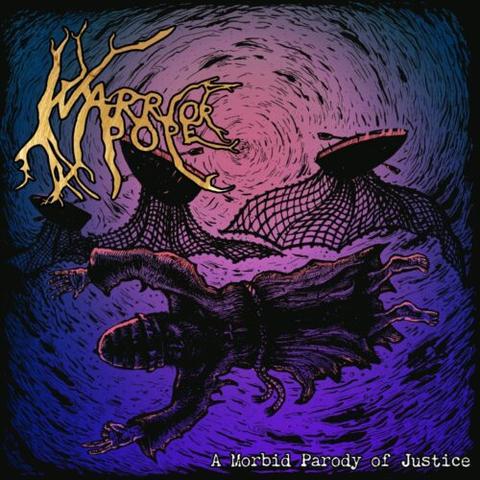
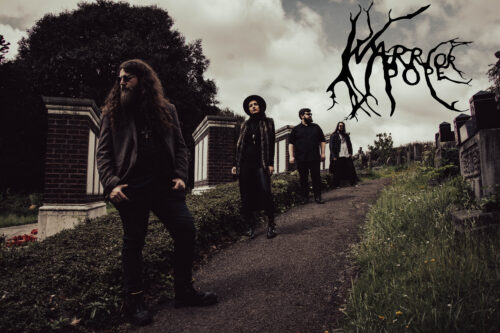


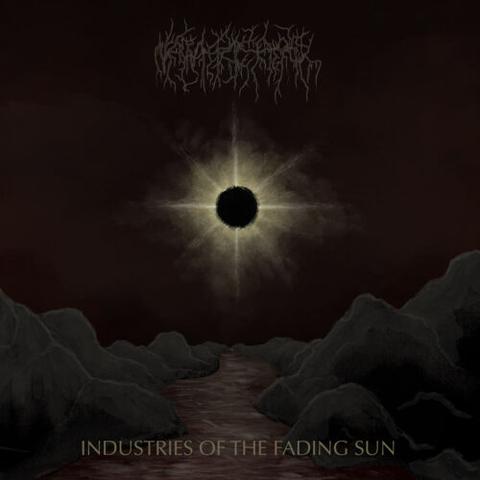



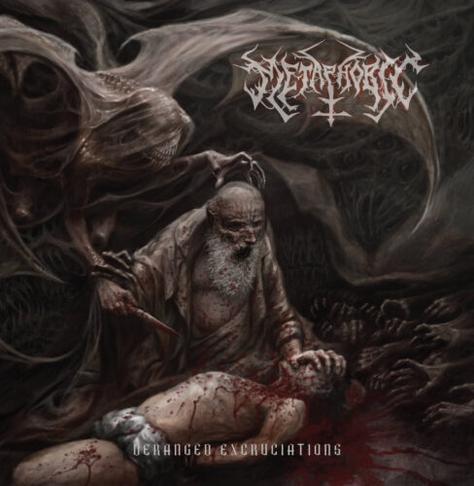





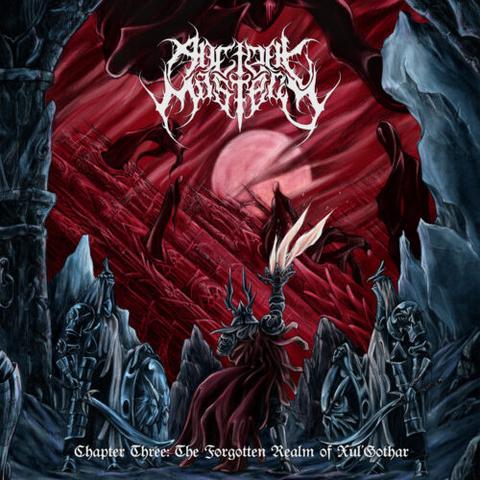



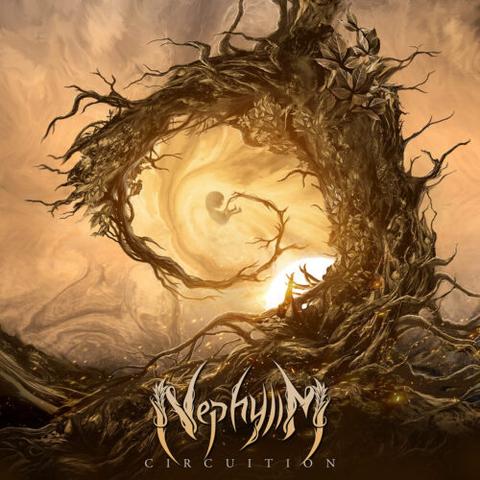

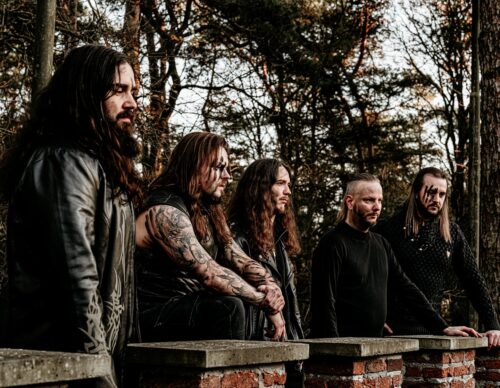


!["KRAV BOCA SIND ABWECHSLUNGSREICH UND EXPERIMENTEL. DIE RIFFS SIND KEINE NEUERFINDUNG VON METALCORE, ES SIND GROOVIGE RIFFS, UM DARAUF ZU RAPPEN.
INTENSIVE, HOCHPOLITISCHE TEXTE
[...] "
VINYL- KEKS.EU](https://files.mastodon.social/media_attachments/files/114/289/791/616/284/636/small/d1fe7be6baf6da51.jpeg)

